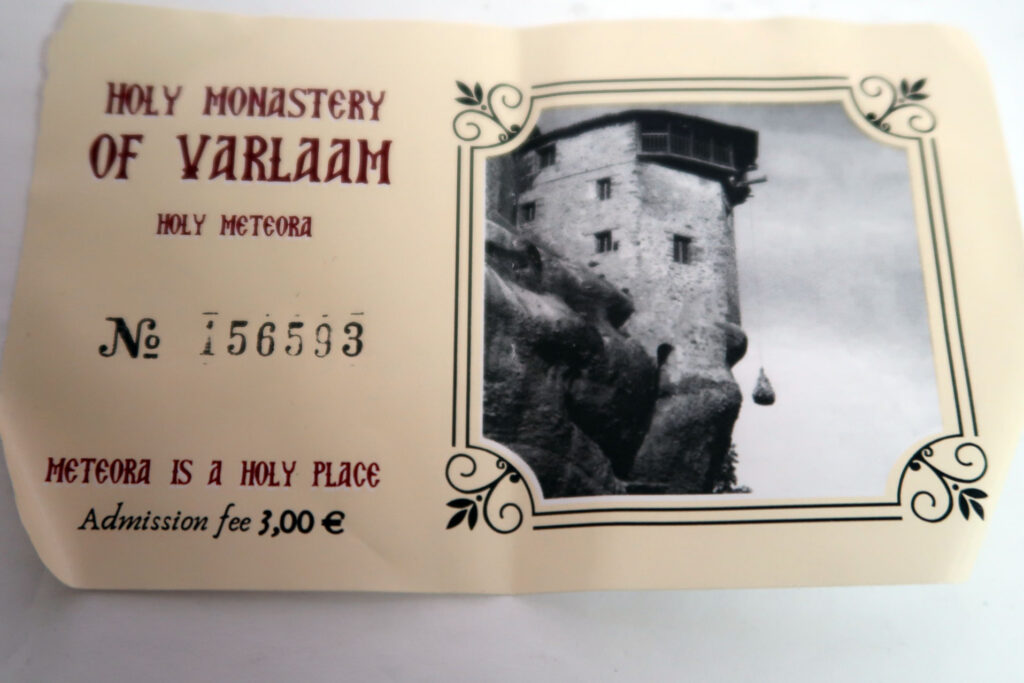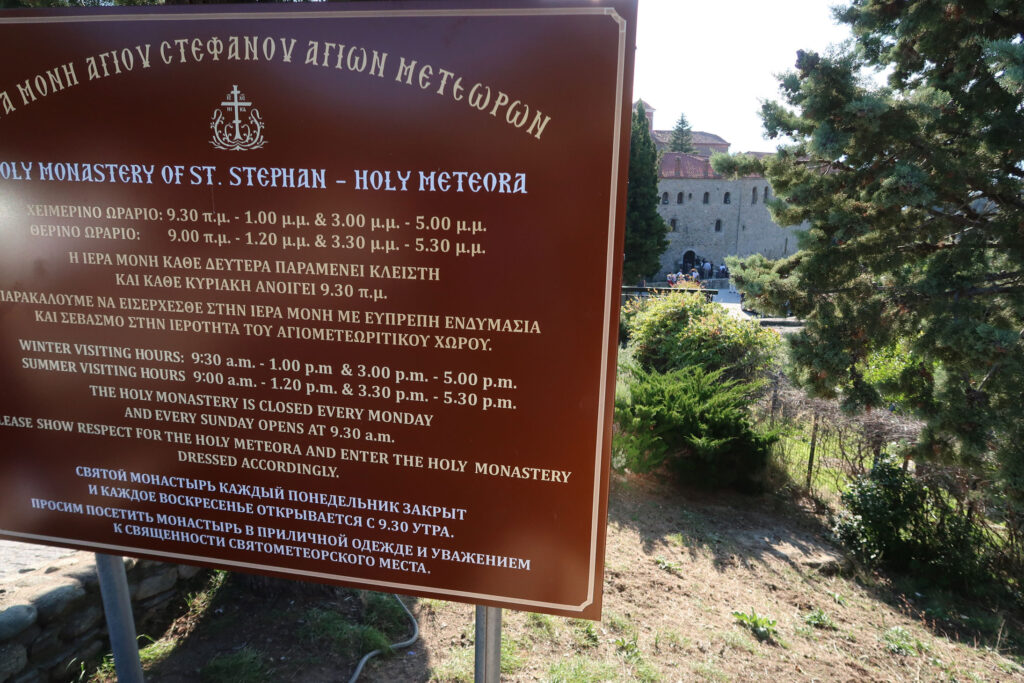In modern-day Greece, where everything seems to look from the past, one place that has a futuristic name is Meteora. It’s a small town in the administrative region of Thessaly that’s about a five (5) hour bus ride from Athens, including a 30-minute break for refreshments in a restaurant called Makadonia after the first 2-hour drive from the capital city.
We visited the place late this year (2023), and despite the long trip, our senses were treated to some of the awe-inspiring vistas in this much-fabled country.
It was supposed to be a train ride from the Larissa Station in Athens to the old, almost run-down station in Kalabaka (for the Greeks, it’s Kalambaka or Kalampaka). From the train station in Kalabaka, small buses will take you up the steep slopes of Meteora. But some railway tracks were still unpassable after floods hit the towns on the way to Kalabaka.
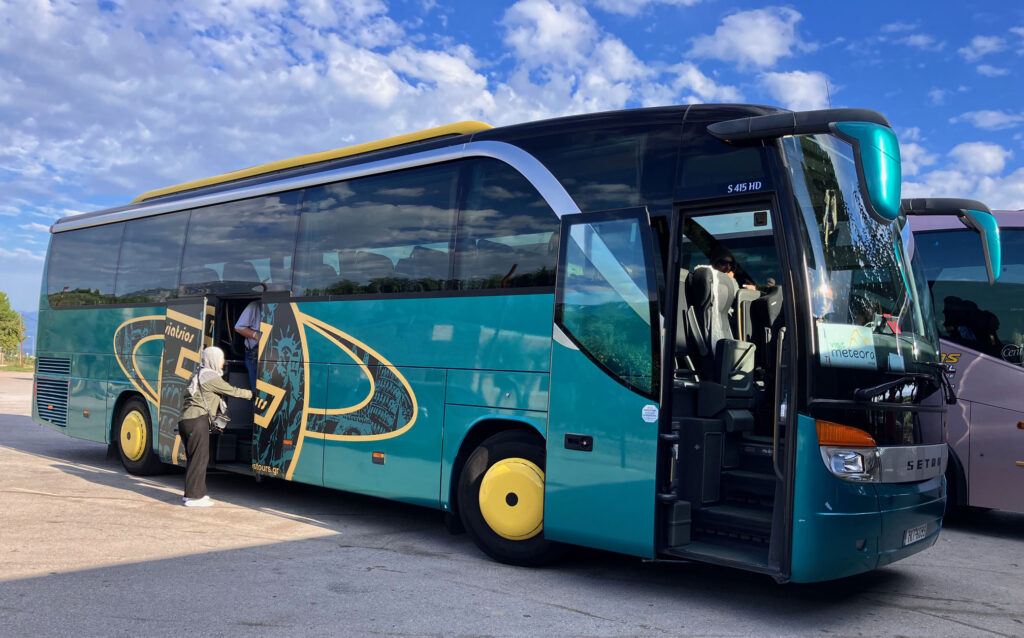
From Athens, the highway going to Meteora (also towards Thessaloniki) heads north, and particularly in Agios Konstantinos (part of Central Greece), bus passengers will have magnificent vistas of the tributaries of the Aegean Sea, like the Malian and North Euboean gulfs.
Olive groves are abundant in the area, which had provided for the country – just like in ancient times – a steady source of revenue — whether as food, oil, or any other by-products like soap, cream, or lotions. It takes about 35 to 40 lbs. of olives to produce a liter of olive oil, but Greek olive oil is one –if not the best– of the best olive oils on the planet.
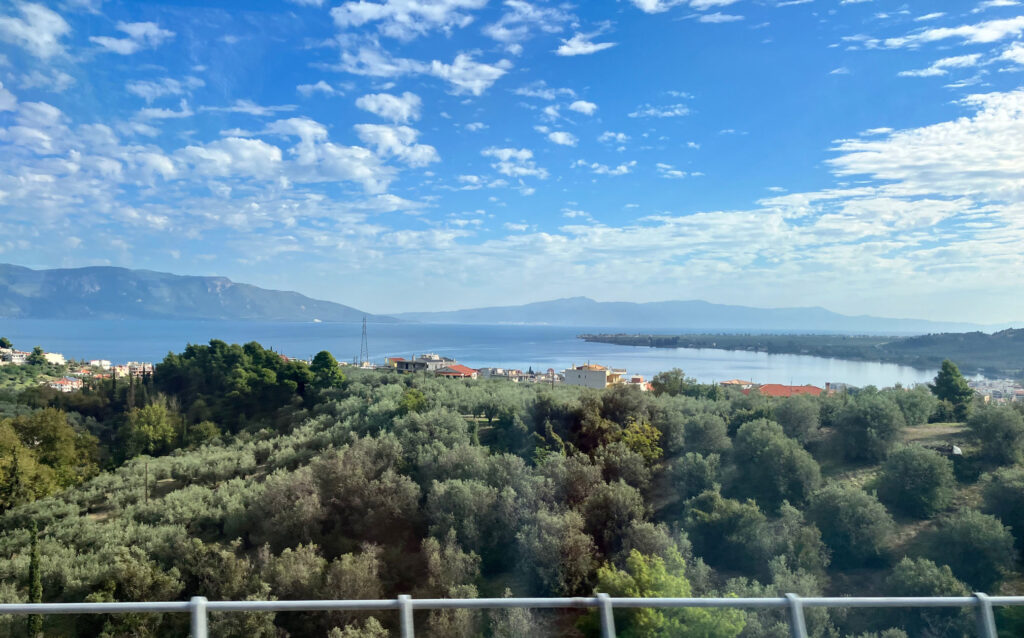
After the long but comfortable bus ride –mainly paved highways– we parked right across the train station where we should have disembarked in Kalabaka had the trains from Athens been operational. We would also get our bus rides back to Athens in this area.
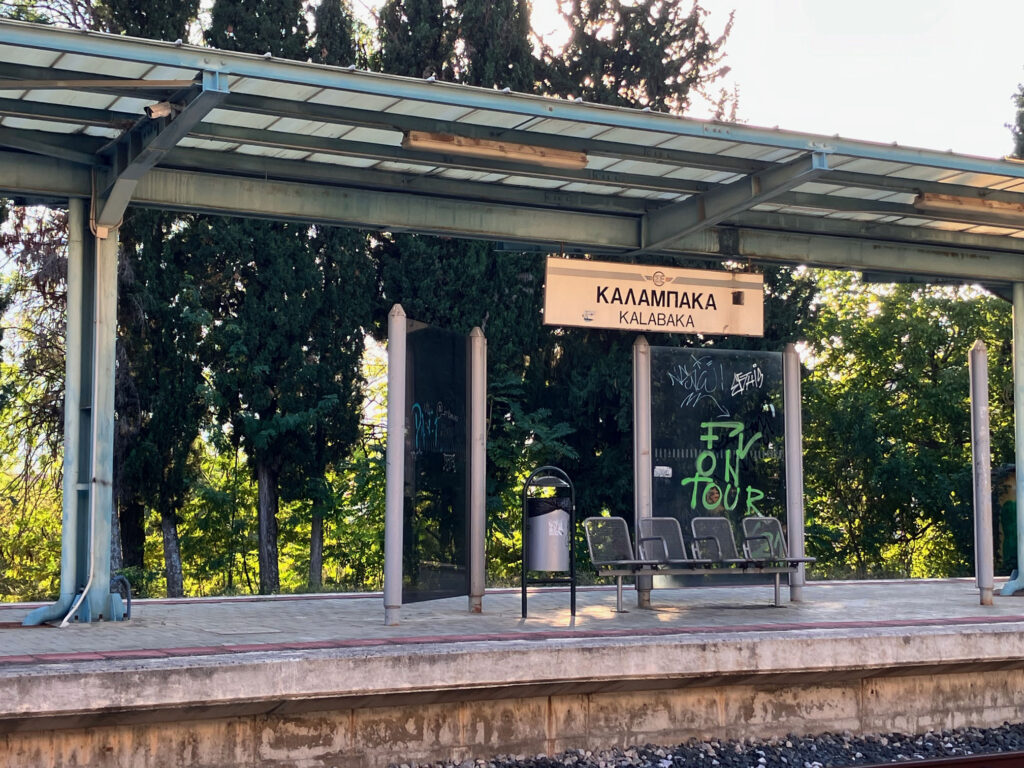
You will have to crane your neck up upon arrival in Meteora. The place seems to have sprouted from nowhere and appeared like humongous mushrooms made of sandstone in the plains of Thessaly.
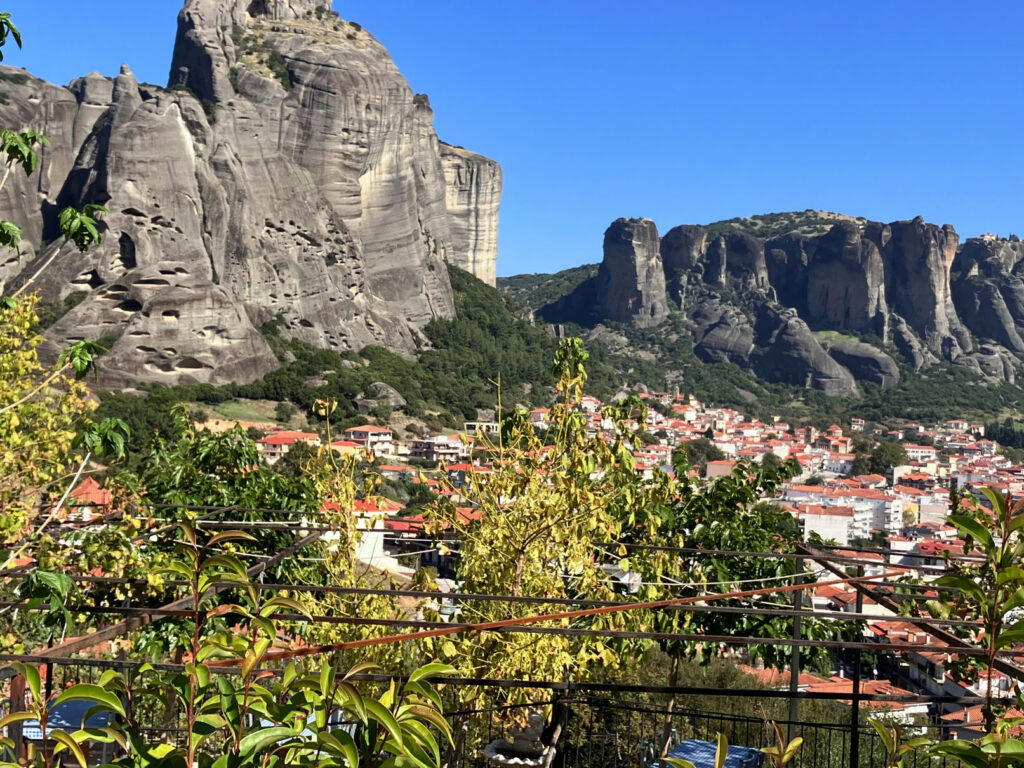
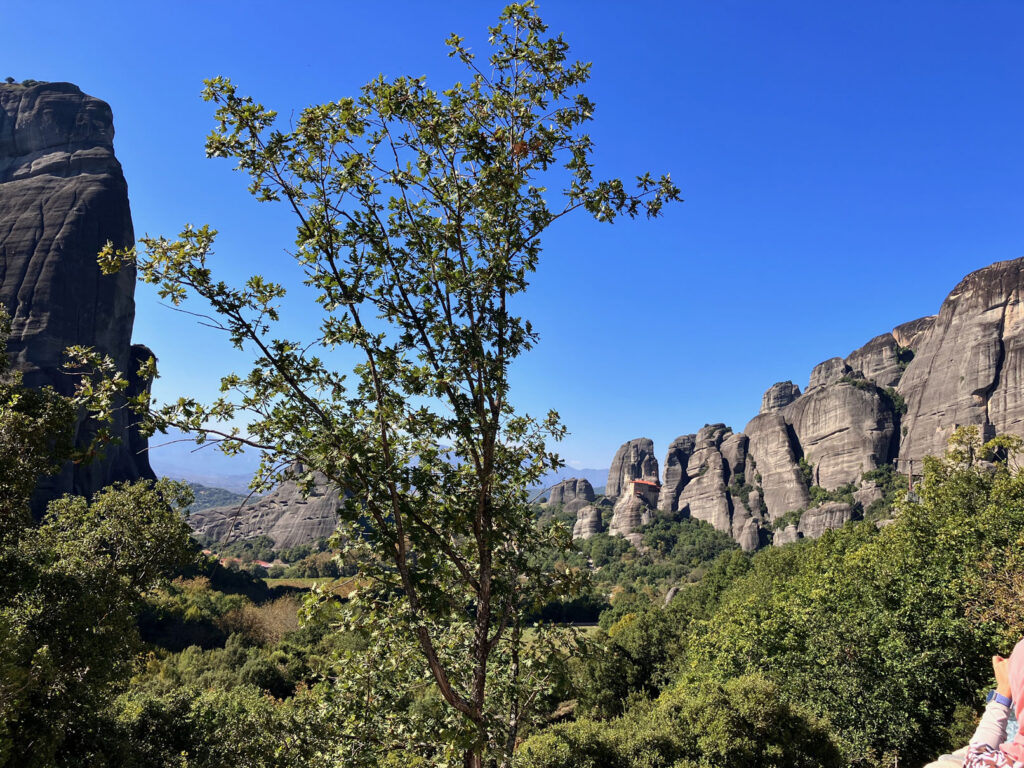
The unique and steep rock formations that took millions of years and the resulting caves within these rocks attracted a group of ascetic monks -as early as the 9th century AD- to live a secluded life as high as they could above the plains.
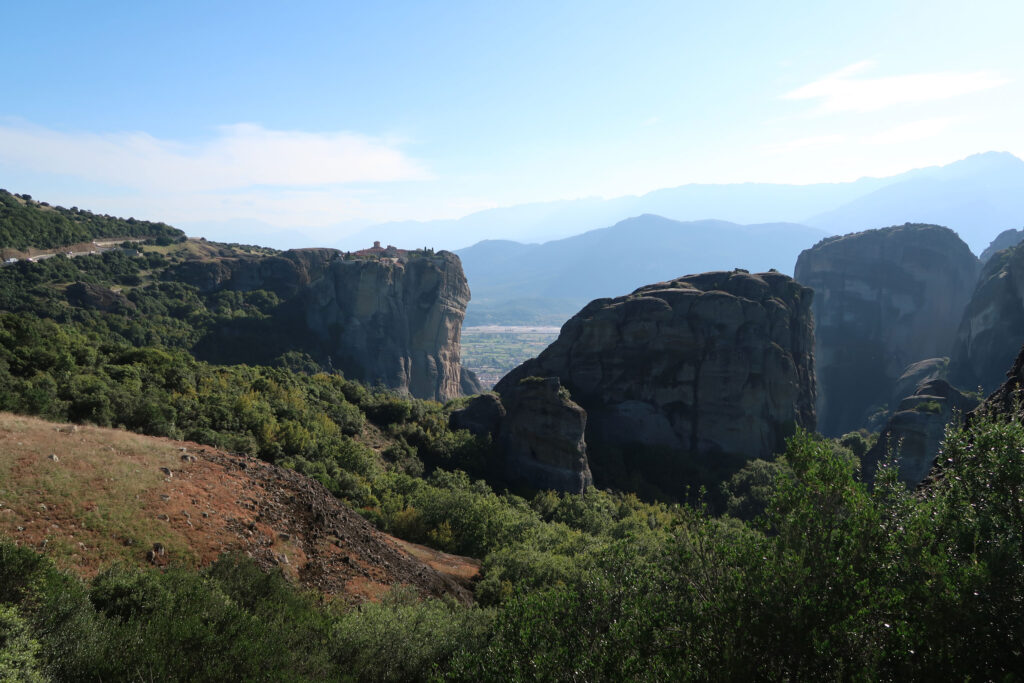
Due to time constraints and the lung-busting steep terrain, we could visit only two (2) of the six (6) active monasteries in Meteora, but we were able to view most of them from afar along the asphalted roads that meander through these cliffs.
The photo below is the Holy Monastery of St. Nicholas Anapafsas, founded in the 14th century.
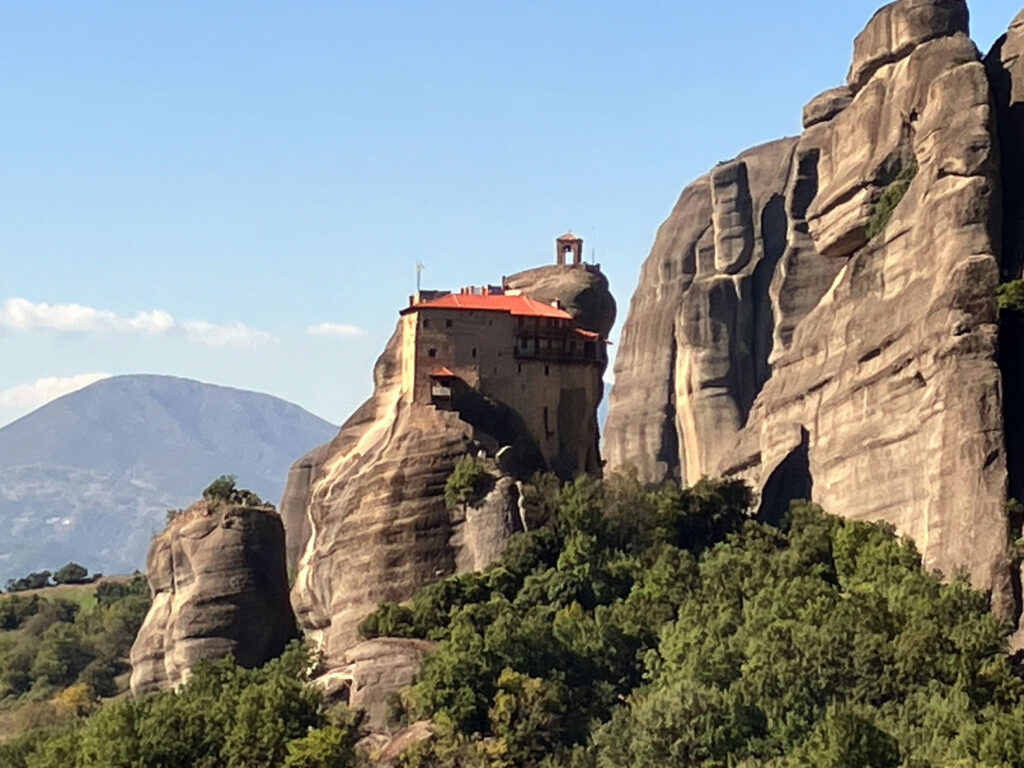
Ruby (photo below) is on her way via the multitude of steps to the Holy Monastery of Vaarlam (founded in 1350 by the ascetic Vaarlam). From a distance, on the right, the Monastery of Rousanou ( founded in 1388* by the priest-monks Nikodemus and Benedict) can seen.
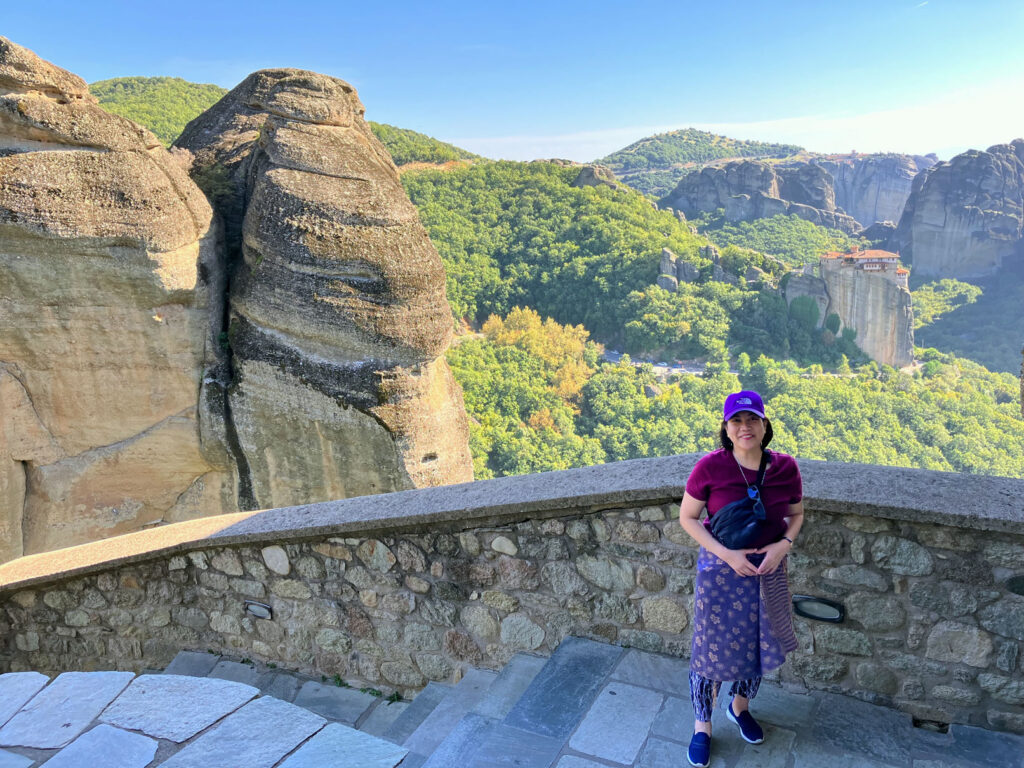
The views (two photos below) inside the chapel at the Holy Monastery of Vaarlam. The nave was painted in 1548 according to an inscription on its south wall, while the frescoes -because of the technique, colors, and figure arrangements- can be attributed to the painter Frango Katelano from Thebes.
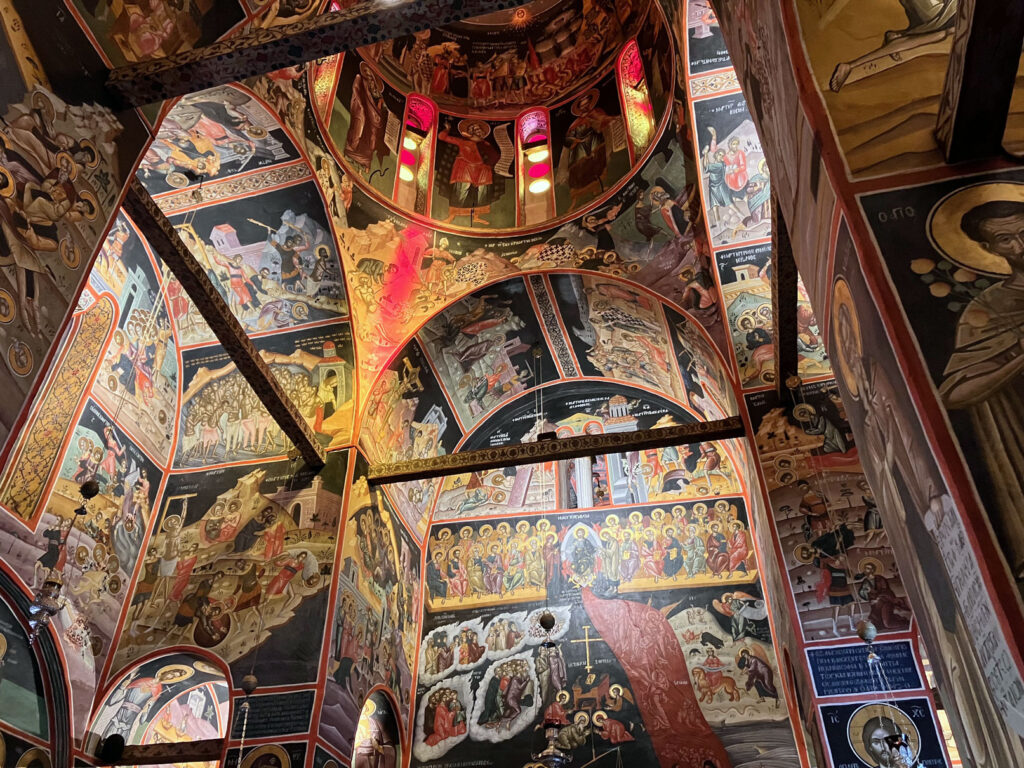
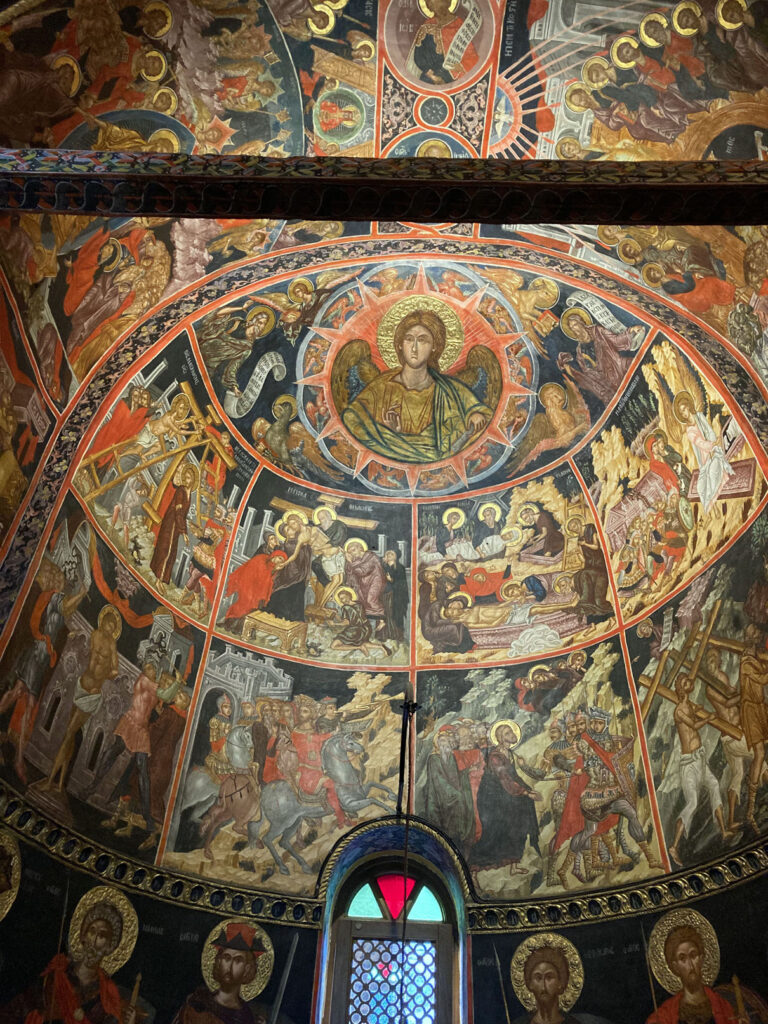
In ancient times, nettings, ropes, and a wooden winch (next photos) were utilized to bring supplies and the monks/people up the steep slopes. Today, these metal cages and a movable motorized winch are utilized for the same purpose.
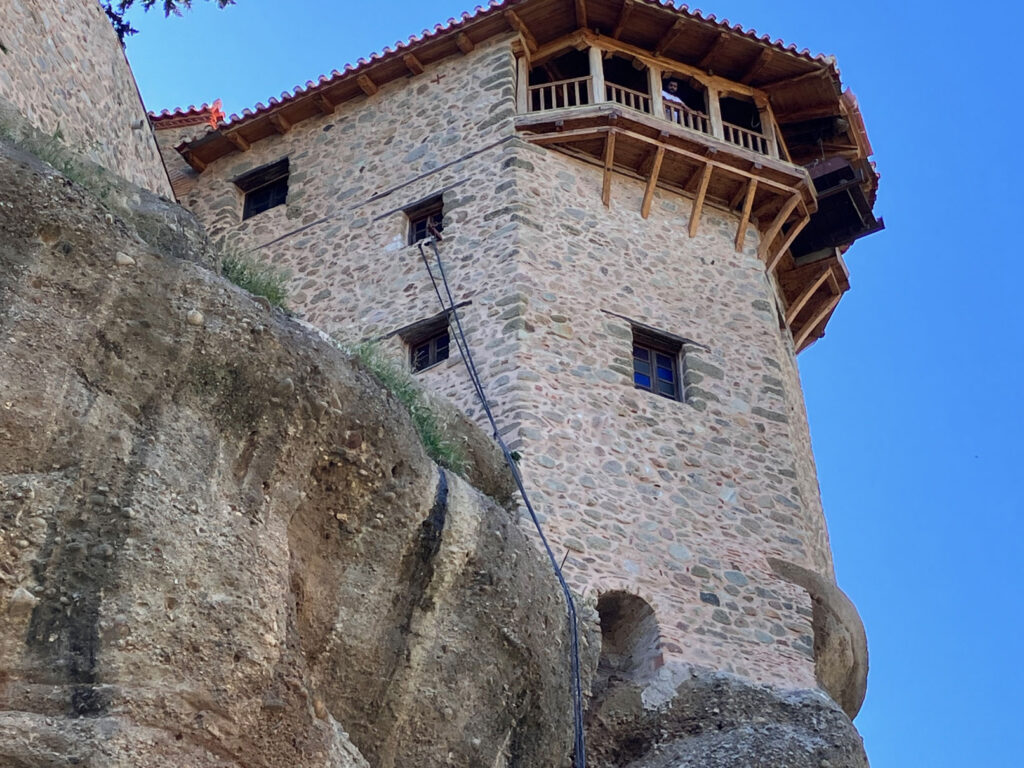
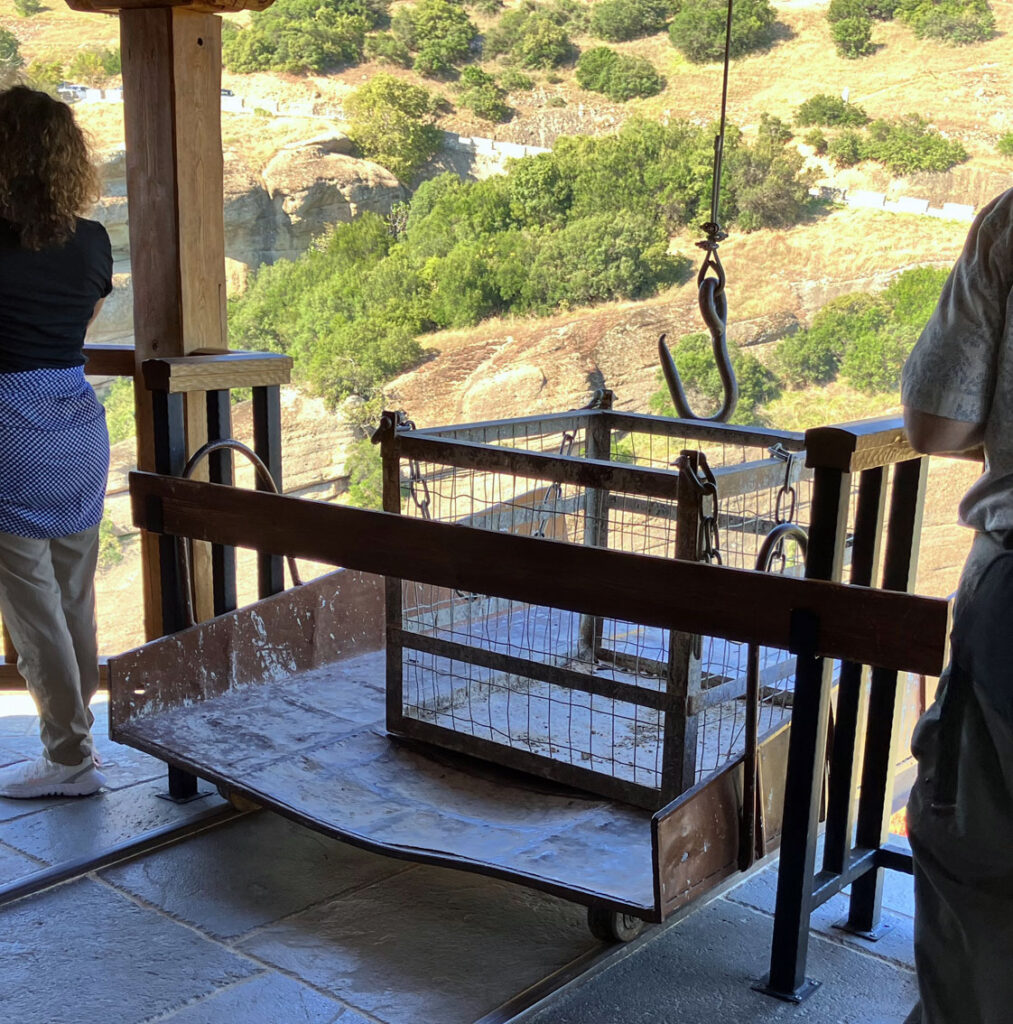
A restored wooden winch brings goods and the monks/people up and down the perilously steep slopes of Meteora’s sandstone cliff walls. Wooden ladders preceded these contraptions, which posed a great threat to the lives of the monks.
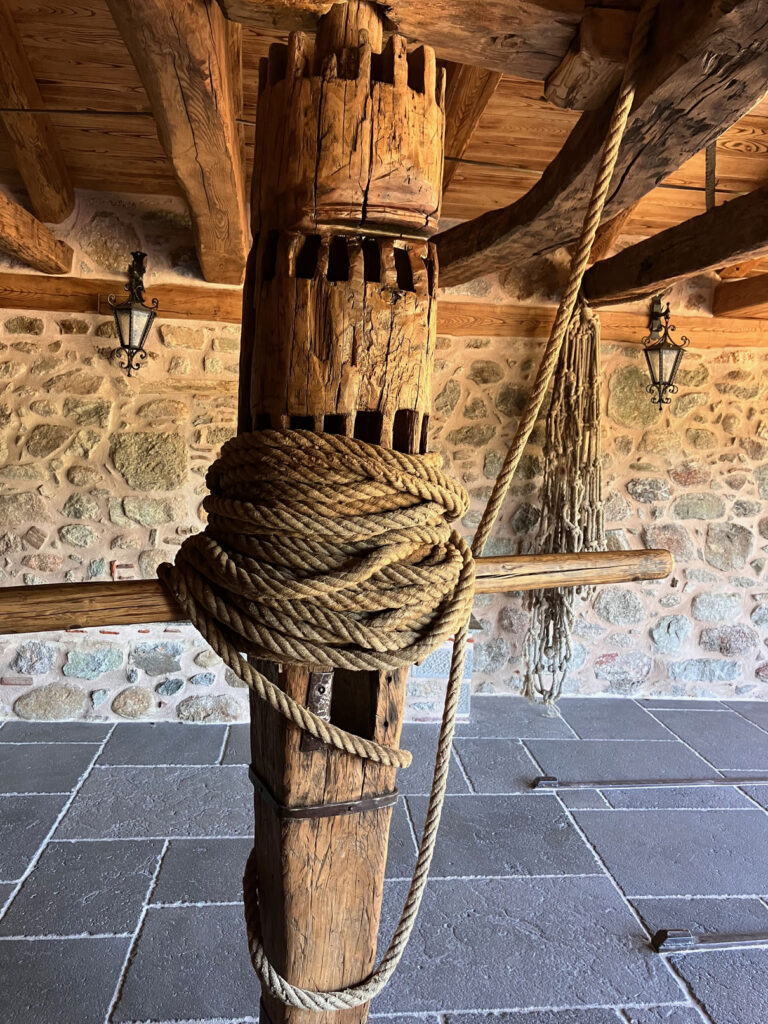
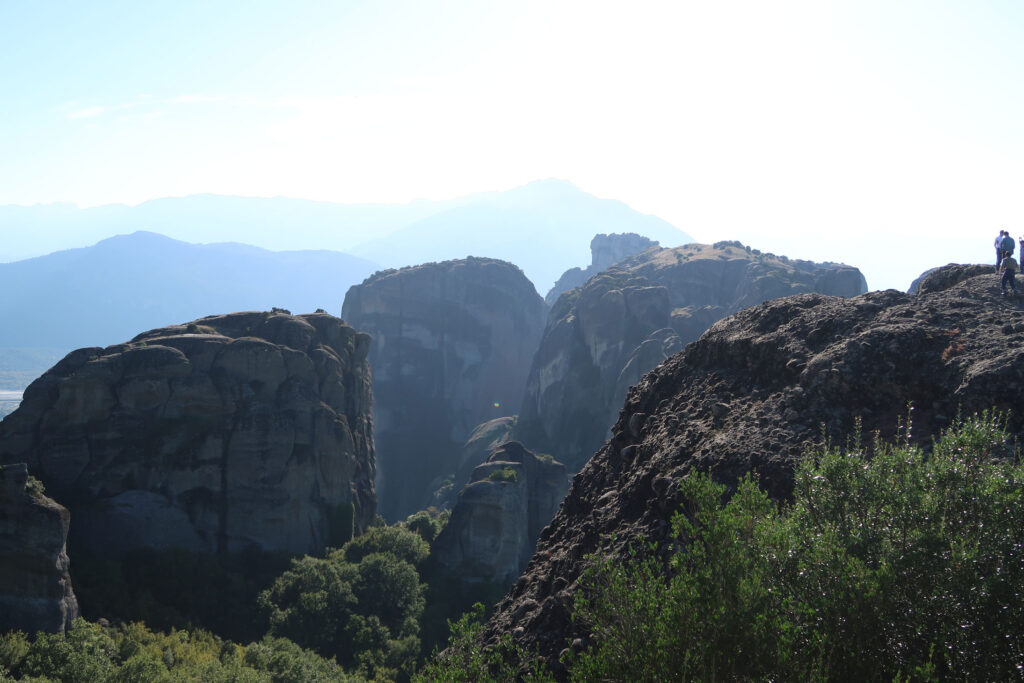
Before heading back to Kalabaka train station for our bus ride back to Athens, we made a final stop at the Monastery of St. Stephen – the closest one to the town and easiest to visit. It is connected with female monasticism and is run by a group of nuns.
Not all monasteries allow visitors, but those who do charge a modest fee of three (3) Euros. Visitors must dress appropriately (long pants for men; no tank tops and long skirts/leg and shoulder coverings for women) – as a show of respect.
